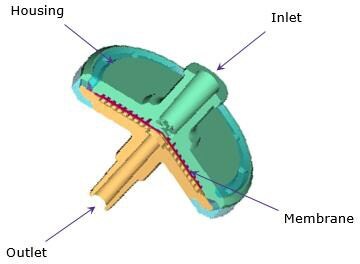Syringe Filters
We have combined 60 years of innovative internal membrane development with strong external partnerships to create a comprehensive and authoritative filtration portfolio. Our proven, industry-leading products ensure you have the fundamental tools you need, regardless of your application.
What is a Syringe Filter?
A syringe filter (or wheel filter) is a single-use, membrane-based device used for the removal of particulate impurities from small (≤ 100 mL) liquid samples (Figure 1). Selected based upon the desired end application, disposable syringe filters are commonly used in labs for fast and efficient filtering, material purification, or even sterilization.

Sterile or Non-Sterile Syringe Filters
While the primary function of a syringe filter is to remove particulates from a liquid sample, you will select either a sterile or non-sterile filter, depending on the end application.
- Sterile syringe filters are used to sterilize non-sterile solutions or clarify sterile solutions. Learn more about sterile filters by application.
- Non-sterile syringe filters are used for general filtration and sample purification.
Learn more about non-sterile filters by application.
How to Use a Syringe Filter
After selecting the appropriate syringe filter and syringe for your sample and application, draw your sample into the syringe and attach the filter to the syringe end. If you are using a leur lock filter, ensure you have correctly secured the filter into the syringe tip. Hold the syringe with the filter pointing up and “top off” by pushing a few drops through the filter. Place the filter tip over the collection container and push the sample through a syringe filter by applying gentle positive pressure. To purge the syringe filter and maximize sample throughput, remove the filter from the syringe and draw air into the syringe. Then reattach the filter and push the plunger to force some of the air through the filter.
Syringe Filter Membranes and Housing
Syringe filters can be categorized by two essential components: the membrane and housing (Figure 1). To select the correct filter, you should ensure both components are compatible with the application. Syringe filter housings are matched based on composition and format, while membranes are matched to end applications by composition, filter diameter, and pore size.
Syringe Filter Housing Formats
Covering a variety of end applications, our syringe filters are offered in three housing formats: classic, overmolded, and domed (Table 1).
Syringe Filter Membrane and Housing Composition
Our combined portfolio offers filters with membranes and housings produced from a variety of different materials. While filter selection is based on the exact application, the most common filter membrane and housing materials include:
Syringe Filters by Pore Size
0.45 μm and 0.2/0.22 μm are the two most frequently used membrane pore sizes for research and medical applications.
- 0.45 μm membranes are typically used for general filtration and particle removal applications.
- 0.2/0.22 μm membranes, or sterilizing-grade membranes, are most commonly used for solution sterilization (bacteria removal).
How is membrane pore size determined?
The simplest method to measure membrane pore size is by using the bubble point test. Bubble point is the pressure at which a continuous stream of bubbles passes through a fully wetted membrane. The bubble point test uses the inverse relationship between bubble point and pore size to determine the maximum pore size of a membrane. 0.45 μm membranes typically have a bubble point between 10 – 25 psi, whereas a 0.2 μm membranes have a bubble point between 40 – 50 psi. Alternatively, sterilizing-grade membranes can also be characterized by bacterial retention, utilizing bacteria of known size.
如要继续阅读,请登录或创建帐户。
暂无帐户?